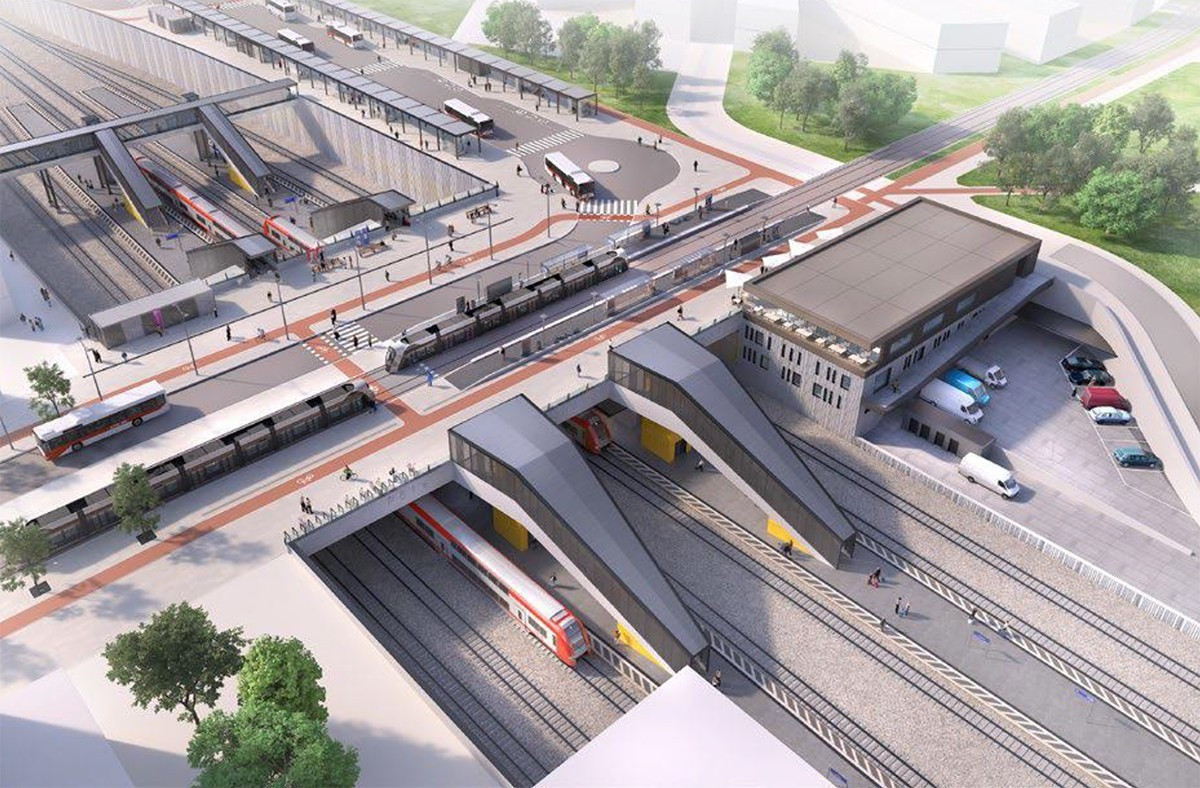The deadline for the tram, which is supposed to pass through Howald in 2023, is getting shorter. However, the state has been negotiating for years with the owners of Bétons Feidt and Olos Fund, which are blocking its passage. In the former case, an agreement has been reached, according to the mobility ministry. Things are more complicated with Olos Fund, however. The investment company is at the heart of a legal battle between the two property developers it brings together, and . In the meantime, it is managed by Yann Baden, an independent director. The State launched an expropriation procedure in 2020.
Before finding a solution, the State had a plan B: to run the tram on a single track on the section in question, lengthening the time between each passage. It was only to be implemented at the last moment. This seems to be the case now, as the mobility ministry confirms that “on the Rue des Scillas, after having reached an agreement with Feidt, we are running on two lanes, but just from the Howald interchange, there will be only one lane". The roadworks has begun, and that of Luxtram is scheduled for the fourth quarter.
The State cannot ignore the laws.
Expropriation procedure underway
This gives the impression of a reduced service because of a conflict between investors. In reality, "the expropriation procedure is not blocked by the conflict,” the mobility ministry explains. "When no agreement for an amicable sale can be reached with the owner, the State must follow the procedure laid down in the amended law of 15 March 1979 on expropriation for public utility. Within this framework, the owner concerned can challenge the validity of the declaration of public utility of the project before the Administrative Court, which the Olos Fund company has done. The procedure "takes time and is currently still ongoing. The state cannot ignore the laws.”
Yann Baden did not respond to Delano’s sister publication, Paperjam. However, "it is he who decides,” explains the lawyer defending Promobe, the company owned by Flavio Becca. "The dispute between the two shareholders is completely unrelated to these questions of expropriation.”
The lawyer for Eric Lux via Ikodomos, Patrick Kinsch, said: "If the state wants to expropriate, it can. The owner is neither Ikodomos nor Promobe, it's Olos fund.” With whom he says he has little contact. "Ikodomos has always supported the tram project; it is not the party that is blocking it.”
The value of the Olos Fund land was estimated in 2018 at €668m .
Obtaining recognition of public interest
If the expropriation is successful, the ministry says that new works will begin to build the second track. But how long can this take? We are talking about “10-year procedures,” estimates Paul Benoit, a lawyer specialising in property law. The challenge is to have the work recognised as being in the public interest. A notion that has "no precise definition,” he explains, referring to jurisprudence to say that it is a question of "construction carried out for the benefit of the community.”
This is not the first time that owners have resisted. There was the Frisange bypass, which did not open to motorists until 18 years after its inauguration because of a dispute between the state and the farmer who claimed the land. “It was not an expropriation procedure. There were exchange and sale agreements signed with the former owner, the validity of which had to be recognised in court,” according to the mobility ministry. Another example, although not a public building site, is the building at 49 Royal Boulevard, around which the Royal-Hamilius had to be built in the face of recalcitrant owners.
